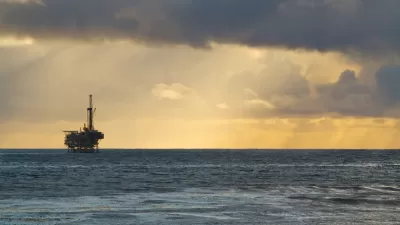In a precedent-setting action that supporters call creative and opponents view as abusive, President Obama has declared a permanent drilling ban off the Atlantic coast from Virginia to Maine and along much of the Alaska coast. But will it last?
"Tuesday’s announcement would ban drilling in about 98 percent of federally owned Arctic waters, or about 115 million acres, a pristine region home to endangered species including polar bears and bowhead whales," writes Coral Davenport, climate and energy reporter for The New York Times. "It would also block drilling off the Atlantic Coast around a series of coral canyons in 3.8 million acres stretching from Norfolk, Va., to the Canadian border."
In January 2105, a mere day after the Interior Department announced it would permanently block drilling in much of the Arctic Refuge, the president agreed to allow drilling in federal waters from Georgia to Virginia, in the Gulf, and some areas off Alaska.
The ban enacted on Dec. 20 invoked "an obscure provision of a 1953 law, the Outer Continental Shelf Lands Act, which [Obama] said gives him the authority to act unilaterally," adds Davenport.
“It’s never been done before,” said Patrick Parenteau, a professor of environmental law at Vermont Law School. “There is no case law on this. It’s uncharted waters.”
"By taking this route, rather than issuing an Executive Order, Obama made it legally difficult for Republican President-elect Donald Trump's administration to reverse this action," reports Steve Horn for EcoWatch.
Opponents view
“We are hopeful the incoming administration will reverse this decision as the nation continues to need a robust strategy for developing offshore and onshore energy,” said Erik Milito with the American Petroleum Institute.
"Fortunately, there is no such thing as a permanent ban, and we look forward to working with the new administration on fulfilling the will of American voters on energy production.”
According to API, "[a] permanent withdrawal conflicts with Congress' stated purpose in creating the Outer Continental Shelf Lands Act (OCSLA), which was to make the outer continental shelf 'available for expeditious and orderly development.'"
"Mr. Obama’s legal experts say they are confident that the ban will withstand legal challenge," adds Davenport. "They point to the specific language of the law: 'The president of the United States may, from time to time, withdraw from disposition any of the unleased lands of the Outer Continental Shelf.'”
Joint action taken with Canada
The president's conservation actions were complemented by those of Prime Minister Justin Trudeau of Canada, who simultaneously announced a review of the federal government's Arctic strategy and agreed to a joint drilling ban with U.S., according to the CBC News. Unlike Obama's ban, though, Trudeau agreed to a review of policy every five years.
In their joint statement, they referenced energy, environmental, and Arctic initiatives the two leaders agreed to in March, each designed to limit climate change and "to strengthen the resilience of Arctic communities and continuing to support the well-being of Arctic residents."
FULL STORY: Obama Bans Drilling in Parts of the Atlantic and the Arctic

Trump Administration Could Effectively End Housing Voucher Program
Federal officials are eyeing major cuts to the Section 8 program that helps millions of low-income households pay rent.

Planetizen Federal Action Tracker
A weekly monitor of how Trump’s orders and actions are impacting planners and planning in America.

Ken Jennings Launches Transit Web Series
The Jeopardy champ wants you to ride public transit.

Rebuilding Smarter: How LA County Is Guiding Fire-Ravaged Communities Toward Resilience
Los Angeles County is leading a coordinated effort to help fire-impacted communities rebuild with resilience by providing recovery resources, promoting fire-wise design, and aligning reconstruction with broader sustainability and climate goals.

When Borders Blur: Regional Collaboration in Action
As regional challenges outgrow city boundaries, “When Borders Blur” explores how cross-jurisdictional collaboration can drive smarter, more resilient urban planning, sharing real-world lessons from thriving partnerships across North America.

Philadelphia Is Expanding its Network of Roundabouts
Roundabouts are widely shown to decrease traffic speed, reduce congestion, and improve efficiency.
Urban Design for Planners 1: Software Tools
This six-course series explores essential urban design concepts using open source software and equips planners with the tools they need to participate fully in the urban design process.
Planning for Universal Design
Learn the tools for implementing Universal Design in planning regulations.
Ada County Highway District
Clanton & Associates, Inc.
Jessamine County Fiscal Court
Institute for Housing and Urban Development Studies (IHS)
City of Grandview
Harvard GSD Executive Education
Toledo-Lucas County Plan Commissions
Salt Lake City
NYU Wagner Graduate School of Public Service




























